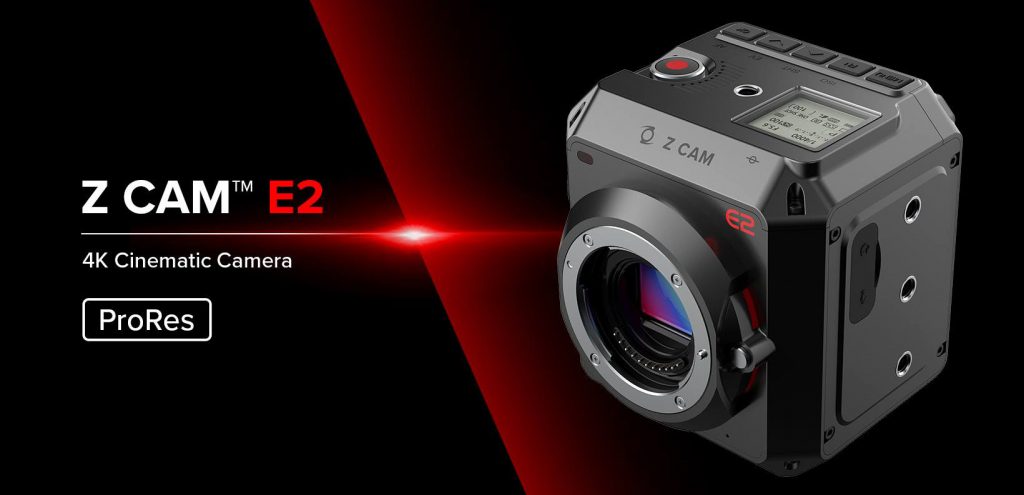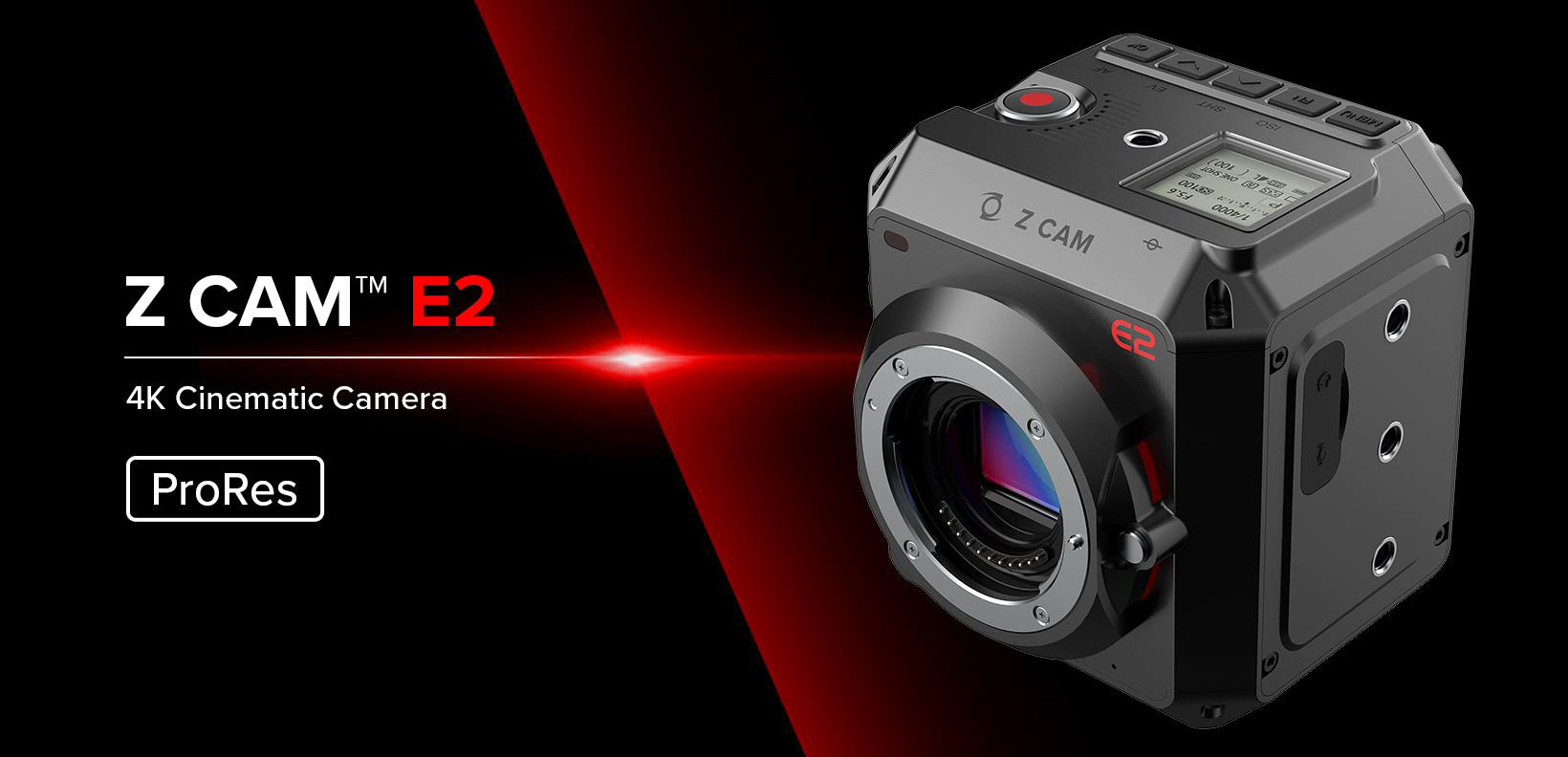Holy specs sheet. Z Cam have just announced a series of modular E2 full frame cameras as well as more affordable Super 35mm and Micro Four Thirds versions. The latter is shipping now at B&H for just $1999 and shoots an impressive 120fps 4K to CFast card, 10bit internal no less. The larger sensor versions are due to hit the shelves in October 2019 and include the E2-S6 with Super 35mm 6K sensor costing $3995. Stepping up to $4995 gets you a 6K full frame sensor and a further $1000 upgrades to the mighty E2-F8 (8K from a full frame sensor).
The pricing is very aggressive but the E2 is just a camera brain. You’ll have to factor in the cost of the necessary kit to make it shootable like a monitor, battery and media.
There is a big shift to full frame from Super 35mm in filmmaking circles at the moment, but even I am surprised how quickly Z Cam have announced these cameras ahead of NAB 2019. The internal codec is certainly not lacking in any way, shape or form:
- 6K and 8K 10bit ProRes recording to CFast cards
- 4K 120fps in H.265 (on the $1999 Micro Four Thirds model)
- Maximum bitrate 230 Mbps for 4096 x 2160
- 10bit H.265 and 8bit H.264 is also supported
The Chinese company claims 16 stop dynamic range in “WDR” mode on the Micro Four Thirds camera shipping now and in 4 weeks in the UK at CVP… It is 13 stops in the normal sensor mode.
The lens mounts offered for the larger sensor E2 variants are a choice of EF and PL for full frame, and EF/PL/Micro Four Thirds for the Super 35mm model.
I am waiting to hear more about the specs of the large sensor models, so do check back later.
I think the Micro Four Thirds model is a superb buy at $1999 and that’s the one I’m considering. 4K 120fps at that price? Yes please.
The E2 also has control settings and live-view to your phone screen over an iOS app, when you don’t want to rig up a field monitor.
Power is via a small Sony NP-F type battery which can connect directly to the back of the camera, and V-lock batteries are supported via a standard D-Tap.
There is autofocus support in both AF-S and AF-C modes and the following Micro Four Thirds lenses are supported:
- Panasonic Lumix 14mm f/2.5 G
- Panasonic Leica DG Summilux 15mm f/1.7 ASPH
- Panasonic Lumix G Vario 7-14mm f/4 ASPH
- Panasonic Lumix G Vario 14-140mm f/3.5-5.6 ASPH. POWER O.I.S.
- Panasonic Lumix G 25mm f/1.7 ASPH.
- Panasonic Lumix G 42.5mm f/1.7 ASPH. POWER O.I.S. Lens
- Panasonic Lumix G X Vario 12-35mm f/2.8 II ASPH. POWER O.I.S.
- Panasonic Leica DG Vario-Elmarit 8-18mm f/2.8-4 ASPH.
- Panasonic Leica DG Macro-Elmarit 45mm f/2.8 ASPH. MEGA O.I.S
- Lumix G X Vario 14-42mm f/3.5-5.6 Power O.I.S.
- Sigma 19mm F2.8 DN Art
- Olympus M.Zuiko Digital ED 8mm f/1.8 Fisheye PRO
- Olympus M.Zuiko Digital ED 12mm f/2
- Olympus M.Zuiko Digital ED 17mm f/1.2 PRO
- Olympus M.Zuiko Digital ED 12-40mm f/2.8 PRO
- Olympus M.Zuiko Digital ED 45mm f/1.2 PRO
- Olympus M.Zuiko Digital ED 75mm f/1.8 Lens
- Olympus M.Zuiko Digital ED 14-42mm f/3.5-5.6 EZ
- Olympus M.Zuiko Digital ED 25mm f/1.2 PRO
- Olympus M.Zuiko Digital ED 60mm f/2.8 Macro
- Olympus M.Zuiko Digital ED 60mm f/2.8 Macro
- Olympus M.Zuiko Digital ED 60mm f/2.8 Macro
- Olympus M.Zuiko Digital ED 30mm f/3.5 Macro
- Olympus M.Zuiko Digital ED 40-150mm f/2.8 PRO
- Olympus M.Zuiko Digital ED 7-14mm f/2.8 PRO
- Olympus M.Zuiko Digital ED 12-100mm f/4 IS PRO
- Olympus M.Zuiko Digital ED 300mm f/4 IS PRO
Well done China. I wish in England we could be making cameras, rather than arguing about Brexit all day.





